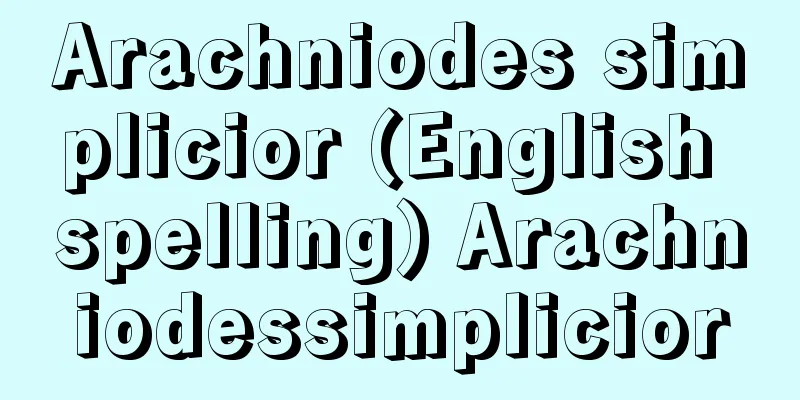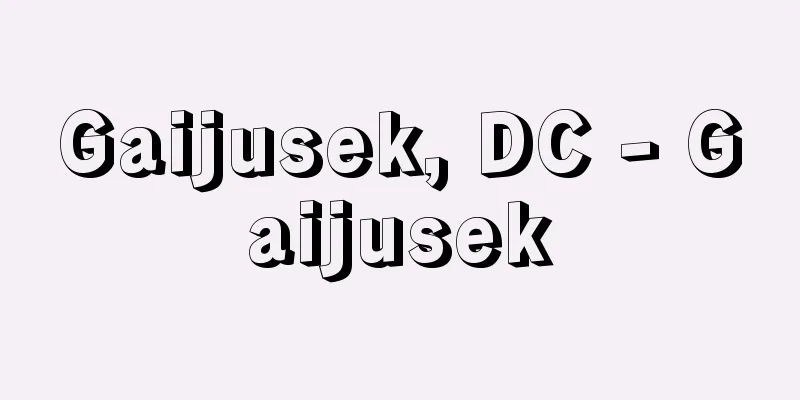Conquest of Choshu

|
The Tokugawa shogunate dispatched troops to the Choshu region in 1864 (Genji 1) and 1865-66 (Keio 1-2). In the Choshu domain, the second Choshu expedition is called the Shikyo War. [Kazuo Yoshimoto] FirstThe Tokugawa Shogunate, which had gained the pretext to pursue and attack the Choshu clan after the Hamaguri Gomon Incident (Kinmon Incident) in July 1864, announced its expedition to the Choshu region, intending to deal a blow to the Sonno Joi faction, and sent troops to the region. The commander-in-chief of the expedition was Tokugawa Yoshikatsu, the lord of Owari, and Matsudaira Shigeaki, the lord of Echizen, was its deputy commander. Saigo Takamori served as staff officer, and they plotted to force the Choshu clan to apologize and surrender. In the Choshu domain, the conservative faction took power in place of the Sonn-no-joi faction after being defeated in the Kinmon Incident and also in the bombardment of Shimonoseki by the four-nation combined fleet, and showed its allegiance to the shogunate. As proof of this, they responded to demands such as the execution of three elder retainers, Fukuhara Echigo, Masuda Uemonnosuke, and Kunishi Shinano, and four staff officers who were responsible for the Kinmon Incident, an apology from the domain's lord, Mori Takachika, and his son, the destruction of Yamaguchi Castle, and the handover of Sanjo Sanetomi and five other nobles who had taken refuge in the Choshu domain after the August 18th Coup (1863). As a result, the shogunate issued an order to withdraw its troops in December of the same year, considering that the purpose of its military deployment had been achieved. [Kazuo Yoshimoto] SecondIn the following year, 1865 (Keio 1), Takasugi Shinsaku raised an army in Shimonoseki against the conservative vulgarists in the Choshu domain, and with the help of various troops, fought the internal conflict in Ota and Edo in Mine County, and the righteous faction took power instead of the vulgarists, changing the domain's stance to one of armed submission. In accordance with this policy, Omura Masujiro was appointed to carry out military reforms, and the savings of the special fund, the Education Department, were used to purchase firearms and ships, westernizing the equipment, and preparing for a second invasion by the shogunate. Meanwhile, the shogunate questioned the attitude of the Choshu clan, and Shogun Iemochi himself left Edo Castle and set out for Kyoto, proposing punishment for the Choshu clan, including a reduction in their fiefdom of 100,000 koku in May 1866. However, the Choshu clan did not comply, and fighting broke out between the shogunate and Choshu armies at the four borders, starting with a battle at Oshimaguchi on June 7, followed by Akiguchi on June 14, Sekishuguchi on June 16, and Kokuraguchi on June 17. The shogunate forces were defeated, and withdrew their troops after Iemochi's death in Osaka Castle in July. After this, the shogunate lost its authority and moved towards the restoration of imperial rule. [Kazuo Yoshimoto] "Research on the History of the Meiji Restoration in the Choshu Domain" by Shigeru Kobayashi (1968, Miraisha) " "Research on the Political History of the Meiji Restoration" by Akira Tanaka (1963, Aoki Shoten) " "The Dawn of Japan - The Meiji Restoration in Yamaguchi Prefecture" (1967), edited and published by the Yamaguchi Prefecture Local History Society" Source: Shogakukan Encyclopedia Nipponica About Encyclopedia Nipponica Information | Legend |
|
1864年(元治1)、1865~66年(慶応1~2)にかけて行われた幕府による征長出兵。長州藩では第二次征長を四境(しきょう)戦争とよぶ。 [吉本一雄] 第一次1864年7月の蛤御門(はまぐりごもん)の変(禁門の変)によって長州藩追討の名目を得た幕府は、尊攘(そんじょう)派に打撃を与える意図もあって、征長を表明し出軍した。征長総督には尾張(おわり)藩主徳川慶勝(とくがわよしかつ)、副将に越前(えちぜん)藩主松平茂昭(まつだいらもちあき)があたり、西郷隆盛(さいごうたかもり)が参謀として、長州藩に謝罪降伏せしめるべく画策した。 長州藩では、禁門の変に敗退し、また四か国連合艦隊の下関(しものせき)砲撃にも敗れたことから、尊攘派にかわって保守俗論派が政権を握り、幕府に恭順の意を示した。その証(あかし)として、まず禁門の変の責任者として福原越後(えちご)、益田右衛門介(ますだうえもんのすけ)、国司信濃(くにししなの)の3家老と4参謀の処刑、藩主毛利敬親(もうりたかちか)父子の謝罪、山口城の破却、八月十八日の政変(1863)後に長州藩に身を寄せていた三条実美(さんじょうさねとみ)以下5卿(きょう)の引き渡しなどの要求に応じた。これによって幕府は、出軍の目的を達したとして、同年12月に撤兵令を発した。 [吉本一雄] 第二次翌1865年(慶応1)になると、長州藩では保守俗論派に対して、高杉晋作(たかすぎしんさく)が下関で挙兵し、諸隊の力を得て美祢(みね)郡大田・絵堂の内訌(ないこう)戦を戦い、俗論派にかわって正義派が政権を握り、藩論を武備恭順へと転換した。この方針に従って、大村益次郎(おおむらますじろう)を登用して軍制改革を実行し、特別資金であった撫育方(ぶいくかた)の貯蓄金を放出して銃器や艦船を購入し、装備の洋式化を図り、幕府の再征に備えた。 一方幕府は、こうした長州藩の態度を詰問して、将軍家茂(いえもち)自ら江戸城を発して上洛(じょうらく)の途につき、1866年5月には10万石削封ほかを内容とする長州藩の処分を打ち出したが、長州藩は応ぜず、6月7日の大島口での戦闘を手始めに、6月14日には芸州口、16日には石州口、17日には小倉口(こくらぐち)と、いわゆる四境で幕府軍と長州軍の戦闘が開始された。結果は幕府軍の敗走に終わり、7月に家茂が大坂城で死去したことを契機に撤兵した。以降、幕府はその権威を失墜し大政奉還へと向かった。 [吉本一雄] 『小林茂著『長州藩明治維新史研究』(1968・未来社)』▽『田中彰著『明治維新政治史研究』(1963・青木書店)』▽『山口県地方史学会編・刊『日本の夜明け――山口県の明治維新』(1967)』 出典 小学館 日本大百科全書(ニッポニカ)日本大百科全書(ニッポニカ)について 情報 | 凡例 |
<<: Intussusception - Intussusception
>>: Zhang Cong-Zheng (English name)
Recommend
Shibukawa [city] - Shibukawa
A city in the center of Gunma Prefecture. It was i...
Andrea Alciato
1492‐1550 Italian jurist known as the founder of h...
FT method - EF Teeho
… [Indirect coal liquefaction] This is a method i...
Oman Gengobei - Oman Gengobei
The name of a character in a novel or play. It is...
Italics - Italics
A typeface in which the characters are inclined, a...
Fraser, Malcolm
Born: 21 May 1930, Melbourne [Died] March 20, 2015...
jahbadh
...A suftaja is a bill of remittance in which the...
Period cost - period cost
...(4) The total cost is calculated by adding the...
Kawachi Prefecture
...National lawsuits were filed 30 times between ...
Shelekhov, GI (English spelling) ShelekhovGI
…Russian fur trader and explorer. Also written as...
Michelis (Callosciurus prevosti)
An arboreal squirrel with a shiny black back and t...
Song Lady - Song Lady
...However, the mass production of "recorded...
Islamic Conference - Islamic Conference
Organization of the Islamic Conference (OIC). Foun...
Takachiho Gorge
This gorge flows through Takachiho Town, Nishiusu...
Bowler hat - Yamatakabo
This hat is primarily for men, modeled after a st...

![Charles [II] - Charles](/upload/images/67cc30ea97a3a.webp)







